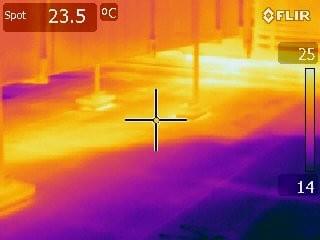Thermal Mass Variation
Thermal Mass Variation
Reveal Hidden Roof Moisture Patterns

Understanding Thermal Mass in Roofing
Thermal mass refers to a material's ability to absorb, store, and release heat. In flat roofing systems, layers such as insulation, membranes, and decking each have unique thermal properties. When moisture seeps beneath the surface—often undetectable visually—it changes the way these materials respond to heat.
The Process: Moisture and Heat Retention
- Moisture increases thermal mass: Water-soaked roofing materials absorb more heat from sunlight than dry materials. Wet sections retain and release heat at different rates compared to surrounding dry areas.
- Daytime absorption: During the day, sun-warmed, moisture-laden spots become heat sinks, storing more energy than dry spots due to water’s higher heat capacity.
- Nighttime release: After sunset, these wet areas cool off slower than the drier regions, continuing to emit heat while the rest of the roof cools rapidly.
Infrared Thermography: Visualizing Moisture Patterns
- Infrared (IR) imaging detects heat radiated from the roof’s surface. A thermal camera creates images called thermograms that map surface temperature variations across the entire roof.
- Wet areas, having altered thermal mass, show up as warmer patches during cooldown periods. Dry sections cool more quickly and appear colder in IR images.
- Thermal patterns: These anomalies—hot spots or sometimes cool spots, depending on conditions—correspond to areas where water is trapped beneath the membrane or within insulation.
Why This Matters
- Early detection: Thermal mass differences allow inspectors to spot wet insulation or leaks before visible signs of damage appear on the surface.
- Accurate mapping: Large or complex roof areas are efficiently scanned, pinpointing problem zones for targeted repairs.
- Non-invasive: No need to damage or dismantle roofing materials; issues are located from the exterior.

Thermal mass variation caused by hidden moisture—detected through infrared thermography—reveals roof leaks and water-intrusion patterns that are invisible to the naked eye. This approach helps property owners and inspectors address roofing issues early, preventing costly damage and maintaining structural integrity.
Visit WBTC Official Websites:
